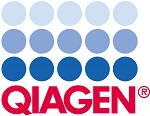Targeting the undruggable proteome with molecular glues

The field of molecular glues has seen a rapid development in the past years and interest in molecular glue technology from the pharmaceutical industry appears to be on the rise, as indicated by deals secured between Neomorph with Biogen and Novo Nordisk, for research into neurological diseases, and cardiometabolic diseases, respectively.
What are molecular glues?
Molecular glues (MGs) are a class of small molecules that facilitate or strengthen interactions between proteins that would not otherwise interact, i.e. they act to ‘glue’ the proteins together by binding the protein-protein interface between a target protein and an effector protein, forming a ternary complex that can promote or enhance an interaction between the two proteins.
Through modifying these protein-protein interactions, molecular glues can be used to alter a number of biochemical processes by promoting protein degradation, altering protein localisation and modifying downstream signaling pathways.
The term ‘molecular glue’ was first coined in 19911 when the mechanisms of action of the immunosuppressants, cyclosporin A and FK506, were uncovered. Both compounds were shown to form ternary complexes with the protein phosphatase, calcineurin, and a second protein, resulting in the inhibition of calcineurin’s phosphatase activity. As calcineurin plays a role in T cell-mediated cytokine transcription and T cell activation3, its inhibition dampens the T cell response. For this reason, cyclosporin A and FK506 are now commonly used to prevent transplant rejection following organ transplantation.
What are the advantages of molecular glues?
Aberrant protein expression underlies many diseases, including cancers, neurodegenerative disorders and autoimmune diseases. While there are estimated to be 20,000 proteins in the human proteome – only 3,000 of these are thought to be ‘druggable’2 and this is predominantly limited to proteins that possess well-defined binding sites to which small molecules can bind.
This leaves a significant number of proteins that are considered ‘undruggable’.
A major advantage of molecular glues is that, unlike conventional inhibitors or modulators, there is no requirement for a well-defined binding pocket. Rather, these molecules can modify protein activity by binding to the interface between two (or more) proteins. This means that proteins with flat surfaces, which are typically difficult to target with small molecules, can be targeted with the assistance of a molecular glue.
Molecular glues can also be used to stabilise and/or enhance an existing protein-protein interaction. In some cases, there are existing direct protein-protein interactions, but they are weak and therefore transient in nature. Molecular glues can stabilise the interaction and therefore either lock the target protein in an inhibited conformation or enhance its signaling.
Given that molecular glues depend upon the presence of an effector protein, the expression of the effector protein will dictate where the molecular glue functions. For example, if the effector protein has a restricted expression profile, then the molecular glue will work preferentially in the cells where the protein is expressed. This is expected to minimise off-target effects4.
What are molecular glue degraders (MGDs)?
Molecular glue degraders (MGDs) are a class of molecular glues that are responsible for targeted protein degradation.
These compounds facilitate protein degradation via their interaction with the protein E3 ubiquitin ligase, which is responsible for adding ubiquitin residues to a substrate, marking it for degradation by the proteasome. MGDs bind both to a subunit on the E3 ubiquitin ligase and to an effector protein. The interaction results in the ubiquitination of the effector protein and its subsequent degradation.
MGDs are considered a valuable tool as they can facilitate the degradation of previously non-targetable proteins and therefore can promote the destruction of aberrantly or overexpressed proteins, which are observed in numerous diseases.
Examples of MGs and MGDs in therapy
Cancer
Multiple myeloma, also known as plasma cell myeloma, is a disease characterised by the abnormal expansion of plasma cells. Thalidomide, and its derivatives lenalidomide and pomalidomide, are approved therapies for the treatment of multiple myeloma, where they function as MGDs. These compounds bind to cereblon, a subunit on the E3 ligase complex, and form a ternary complex with either of the transcription factors: IZKF1 and IZKF3. This ultimately results in the degradation of these transcription factors and given that they play a role in T cell differentiation, their degradation inhibits the proliferation of the myeloma cell.
There are numerous molecular glues that are currently in the pre-clinical and clinical stages for the treatment of various cancer types, including lung cancer, melanoma and lymphoma5, therefore showing the growing interest of molecular glues in the field of oncology.
Neurodegenerative diseases
Neurodegenerative diseases are a group of disorders characterised by motor or cognitive impairment. Many neurodegenerative diseases, including Alzheimer’s disease, are associated with aberrant protein expression and protein misfolding resulting in insoluble aggregates forming within the brain.
Molecular glues are of great interest in the field of neurology. Their ability to promote protein degradation is particularly advantageous for targeting misfolded and/or overexpressed proteins. Furthermore, given the small size of molecular glues, they can bypass the blood-brain barrier – an issue that has hindered other targeted protein degraders6.
Whilst molecular glues have not yet reached the clinic for the treatment of neurodegenerative diseases, a deal between Biogen and Neomorph in October 20247 has highlighted the potential impact of molecular glues in this field. Biogen has acquired Neomorph’s MGD discovery platform to identify and validate MGDs for the treatment of Alzheimer’s disease as well as rare neurological and immunological diseases. Depending on the efficacy of such MGD treatments, we may see MGDs as therapeutics for neurological diseases in the near future.
Autoimmune diseases
Molecular glues have largely been investigated and utilised in oncology, however there is growing interest in using them to treat autoimmune diseases. MRT-6160 is a MGD that promotes the degradation of a protein called VAV1, which plays a critical role in mediating T- and B-cell activity. MRT-6160 has been proposed as a therapeutic for numerous autoimmune and inflammatory diseases including rheumatoid arthritis, multiple sclerosis, inflammatory bowel disease and psoriasis8. There is currently an ongoing Phase I trial investigating MRT-6160 for use in the treatment of multiple sclerosis.
Trends in patent filings
Global innovation, as demonstrated by new patent filings, has increased in the field of molecular glues over the previous 20 years although a decline in number was seen in 2024 (Figure 1). A peak in the total number of applications filed was observed in 2023, with a total of 58 applications filed.
In terms of the top filing jurisdictions, the most priority applications concerning molecular glue technology filed over a 20-year period were filed in China followed by the United States (Figure 2). Both these jurisdictions observed significantly more priority filings in this field than any other jurisdiction.
The majority of priority applications in Europe were filed in 2022 (Figure 3). The US and Korea also saw a significant peak in priority applications filed in 2022, whilst the number of priority applications filed in China appears to be on the rise.
A general decline was seen in 2024 in the US, EPO and Korea. It is not clear why this decline was observed, but it may be due to lack of funding, the difficulties associated with identifying and screening molecular glues or a lack of certainty regarding clinical efficacy pending the outcome of clinical trials.
The total number of priority applications directed towards molecular glue technology appears to be relatively low compared with other technologies, such as Proteolysis Targeting Chimeras (PROTACs), for example, which are bifunctional molecules with two heads connected by a linker. PROTACs and molecular glues have often been grouped together as targeted protein degraders however, they act via different mechanisms. Whilst molecular glues act via binding to the protein-protein interface, PROTACs act by binding to a motif on the target protein via the first head and binding to the effector protein via the second head.
The greater interest in PROTAC technology may reflect the fact that the screening and rational drug design for PROTACs is considered to be a more simplified process than for molecular glues. However, given the advantages associated with molecular glues it will be interesting to see whether the gap between filings directed towards molecular glues and PROTACs decreases in the future.
Conclusion
In summary, molecular glues offer a unique potential to target the undruggable proteome and their potential clinical impact is evidenced by the large number of ongoing clinical trials investigating such compounds.
However, screening approaches and discovery platforms are hindered by the complexity of the mechanisms underlying these compounds9 and indeed a large number of the currently known molecular glues were found by serendipity. In contrast to classical drug development, which requires the analysis of a single target protein, screening for potential molecular glues requires one to focus on the possible binding motifs on both the target and effector proteins, and to predict the possible interactions between the two proteins, which requires a detailed understanding of such interactions. However, AI technology can be used to simplify this process by predicting the relevant binding motifs at the protein-protein interfaces and research in the field has shown the efficacy of these models in identifying potential molecular glue targets10.
References
- Schreiber et al (2021). The Rise of Molecular Glues. Cell 184(1): 3 – 9.
- Smith et al (2024). Drugging the entire human proteome: Are we there yet. Drug Discovery Today. 29(3):103891.
- Huai et al (2002). Crystal structure of calcineurin-cyclophilin-cyclosporin shows common but distinct recognition of immunophilin-drug complexes. PNAS 99(19): 12037 – 12042.
- Geiger et al (2022). Clues to molecular glues. Current Research in Chemical Biology 2:10018
- Biopharma PEG (2023). Summary of Molecular Glues Approved or in Clinical Trial. Accessible at Summary of Molecular Glues Approved or in Clinical Trial | Biopharma PEG
- Thomas et al (2023). Central Nervous System Targeted Protein Degraders. Biomolecules 13(1164).
- Biogen (2024). Biogen and Neomorph announce multi-target research collaboration to discover and develop molecular glue degraders for Alzheimer’s, rare and immunological diseases. Accessible at: Biogen and Neomorph Announce Multi-Target Research Collaboration to Discover and Develop Molecular Glue Degraders for Alzheimer’s, Rare, and Immunological Diseases | Biogen
- Monte Rosa Therapeutics. Accessible at : Monte Rosa Therapeutics – Pipeline
- Holgate et al (2024). Screening for molecular glues – Challenges and opportunities. SLAS Discovery. 29(2): 100136
- Prael et al (2025). Explainable artificial intelligence for targeted protein degradation predictions. Artificial Intelligence in the Life Sciences 7: 100121.





















